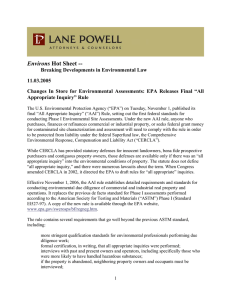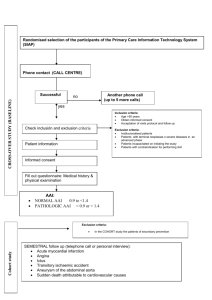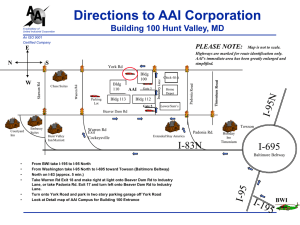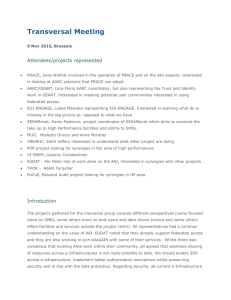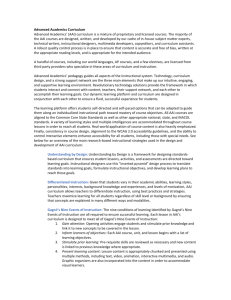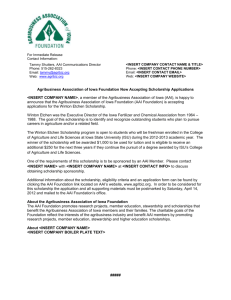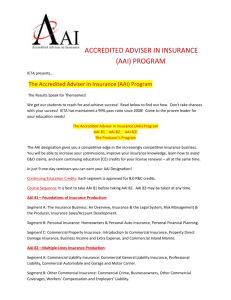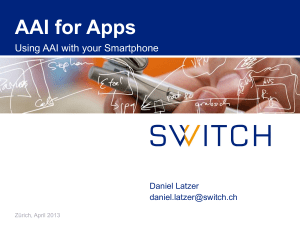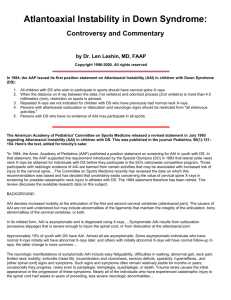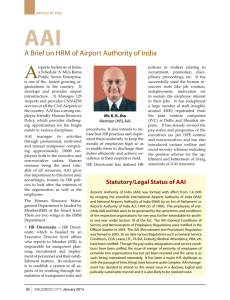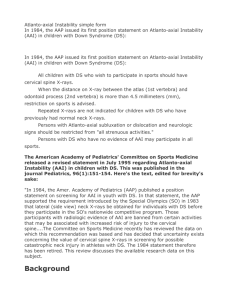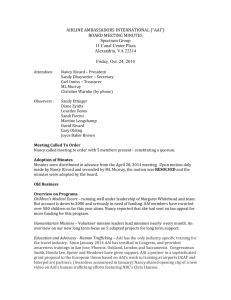EPA`s All Appropriate Inquiry (AAI)
advertisement
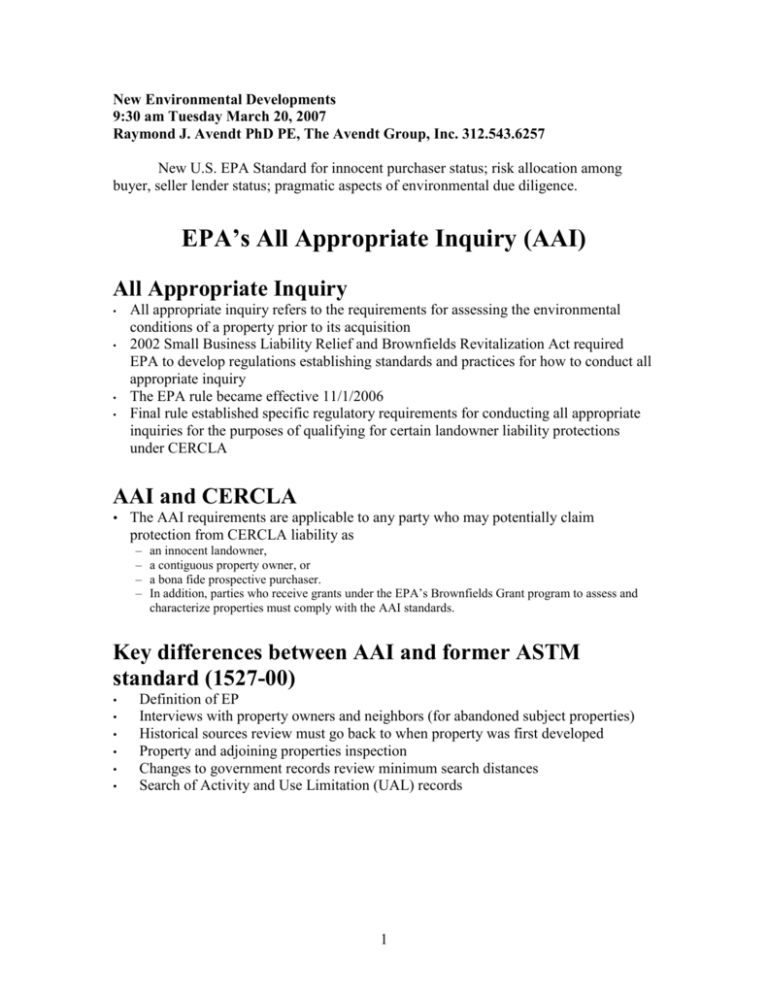
New Environmental Developments 9:30 am Tuesday March 20, 2007 Raymond J. Avendt PhD PE, The Avendt Group, Inc. 312.543.6257 New U.S. EPA Standard for innocent purchaser status; risk allocation among buyer, seller lender status; pragmatic aspects of environmental due diligence. EPA’s All Appropriate Inquiry (AAI) All Appropriate Inquiry • • • • All appropriate inquiry refers to the requirements for assessing the environmental conditions of a property prior to its acquisition 2002 Small Business Liability Relief and Brownfields Revitalization Act required EPA to develop regulations establishing standards and practices for how to conduct all appropriate inquiry The EPA rule became effective 11/1/2006 Final rule established specific regulatory requirements for conducting all appropriate inquiries for the purposes of qualifying for certain landowner liability protections under CERCLA AAI and CERCLA • The AAI requirements are applicable to any party who may potentially claim protection from CERCLA liability as – – – – an innocent landowner, a contiguous property owner, or a bona fide prospective purchaser. In addition, parties who receive grants under the EPA’s Brownfields Grant program to assess and characterize properties must comply with the AAI standards. Key differences between AAI and former ASTM standard (1527-00) • • • • • • Definition of EP Interviews with property owners and neighbors (for abandoned subject properties) Historical sources review must go back to when property was first developed Property and adjoining properties inspection Changes to government records review minimum search distances Search of Activity and Use Limitation (UAL) records 1 Key differences between AAI and former ASTM standard (1527-00) (cont’) • • • • • • Specialized knowledge or experience by “User” Relationship to purchase price to value of property, if property were not contaminated Commonly known or reasonably ascertainable information about the property Contaminants of concern Data gap identification Shelf life of written report EPA’s AAI vs. ASTM E 1527-05 • ASTM revised 2000 standard to satisfy EPA that it was “at least as stringent” as AAI rule • Property owners can follow either E 1527-05 or AAI to qualify for CERCLA liability protection as of 11/1/06 • Verify user preference – U.S. Small Business Administration adopted AAI – Standard & Poors plans to adopt E 1527-05 – Attorneys demanding AAI-compliant scopes as “current standard of care” AAI Facts • There are ten components of the AAI that must be satisfied for CERCLA protection • Report must identify the components • Some components can be conducted by “user,” others must be conducted by Environmental Professional (EP) • 1-year shelf life AAI Components - Performed by EP • • • • • Environmental inquiry/investigation Visual inspections of the facility and adjoining properties Interviews with past and present owners, operators and occupants Review of historical sources Review of government records AAI Components - Performed by “User” • • • Search for recorded environmental cleanup liens Consider “specialized knowledge” of the subject property and adjoining properties Consider relationship of purchase to fair market value of property, in not contaminated 2 AAI Components - Shared by EP and “User” • • Consideration of commonly known information about the property Consideration of the “degree of obviousness of contamination” Environmental Inquiry • • • Many of the inquiry’s activities must be conducted by, or under the supervision or responsible charge of, an individual who qualifies as an EP EP possesses sufficient specific education, training, and experience necessary to exercise professional judgment to develop opinions and conclusions regarding conditions indicative of releases or threatened releases of hazardous substances on, at, in, or to a property An environmental professional must have: – – – A federal, state or tribal issued certification or license and three years of relevant full-time work experience; or A Baccalaureate degree or higher in science or engineering and five years of relevant full-time work experience; or Ten years of relevant full-time work experience. Visual Inspections • • AAI requires inspection of the property and any improvements on the property, as well as visually inspect areas on the property where hazardous substances may currently be or in the past may have been used, stored, treated, handled, or disposed In cases where physical limitations restrict the portions of the property that may be visually inspected, the physical limitations encountered during the visual on-site inspection (e.g., weather conditions, physical obstructions) must be documented Interviews • • • • • • Interview current owner and occupant to obtain information regarding the potential environmental conditions of the property May interview additional individuals, including current and past facility managers, past owners, occupants, or operators, or employees Interview with neighboring property owners or occupants must be conducted if subject property is abandoned AAI does not prescribe particular interview questions Interview may provide valuable information for the visual inspection Interview may include requesting information, such as the locations of operations or units used to store or manage hazardous substances Review of Historical Sources • Historical records must be searched for information on the property covering a time period as far back in history as there is documentation that the property contained structures or was placed into use of some form 3 • • Lack of property use documentation to beginning of use must be documented as a data gap EP uses professional judgment to determine type of historical documentation may provide the most useful information Review of Government Records • • • • • • Requires search for institutional and engineering controls at the subject property Tribal government records searched when subject property is located on or near tribal-owned lands Mandatory search for local government records Changes to search distances for de-listed NPL sites and CERCLIS NFRAP sites EP may adjust search distances using professional judgment Lack of information must be documented as a data gap Search for Liens • • • • • • Liens are encumbrances on property for the recovery of incurred cleanup costs Often provide an indication that environmental conditions either currently exist or previously existed on a property Indicator of potential environmental concerns and as a basis for further investigation May be recorded as part of the land title records or as part of other state or local government land or real estate records May be recorded in different places, depending upon the particular state and particular locality in which the property is located If EPA is conducting a cleanup at site at the time it is transferred or acquired, EPA is able to record a lien post acquisition Consider Specialized Knowledge • The specialized knowledge of prospective landowners and the persons responsible for undertaking the all appropriate inquiries, including grantees, must be taken into account when conducting the investigation for the purposes of identifying conditions indicative of releases or threatened releases at a property Consider Purchase Price vs. Fair Market Value, if no contamination • • • Investigation should include a consideration of whether a significant difference between the price paid for a property and the fair market value of a property, if the property were not contaminated, is an indication that the property may be contaminated Price comparison may be conducted by the prospective landowner or the grantee, undertaken as part of the EP investigation or another third party If price comparison information is not provided to EP, lack of this information is a data gap 4 Consider Commonly Known or Reasonably Ascertainable Information • • Commonly known or reasonably ascertainable information includes information about a property that generally is known to the public within the community where the property is located and can be easily sought and found from individuals familiar with the property or from easily attainable public sources of information In many cases, this information may be incidental to other information collected during the investigation, and separate or distinct efforts to collect the information may not be necessary Consider Degree of Obviousness of Contamination Consider all the information collected during the conduct of the inquiries in totality Must assess whether or not an obvious conclusion may be drawn that there are conditions indicative of a release or threatened release Consider whether or not the totality of information indicates that the parties should be able to detect a release or threatened release EP must develop opinion regarding additional appropriate investigation Sampling and analysis not required Sampling may be valuable to determine possible presence and extent of potential contamination and may help explain data gaps The fact that AAI standards do not require sampling and analysis does not prevent a court from concluding that sampling and analysis should have been conducted Sampling and analysis, either pre-or post-acquisition, may help to fully understand the conditions at a property, and fully comply with the statutory requirements for CERCLA liability protections 5 Areas of Potential Liability Requirement of AAI Rule Reliance on qualified “environmental professional” Data gaps analysis Declaration by Environmental professional Professional opinion Potential Liability Posed Steps for Mitigating Liability “Relevant experience” can be somewhat subjective. Experience on certain property types may not transfer to experience across the board. If a data gap exists and conclusion is made despite the gap, further information may lead to the discovery of a REC. If the EP is signing off on a project that he or she is in “responsible charge” of, but did not complete all of the work, they may still be considered liable for any inaccuracies within the report. Your opinion may be proven wrong in the future. Document EP qualifications clearly, especially years of relevant experience and the type of experience on similar projects. Interviews The truthfulness of interviewees is never certain. Visual inspection of the facility and of adjoining properties If a Phase I is brought under scrutiny of a court, the qualifications of the individual who conducted the site visit will likely be questioned. User-provided Information EPs cannot avoid relying on other’s work or truthfulness. 6 Disclaimers can be useful in this case. Consultants should verify that their contract does include language that protects them from such liability. If junior level staff is participating in report preparation or research, be certain to communicate clearly about what is being done and how. Also, implement appropriate QA/QC measures in your office. Document exactly how opinion was reached. Have a company policy that designates how an opinion is formulated. Limitations on liability should document that although the EP relied on information from interviews to reach their opinion, the truthfulness of those opinions are not guaranteed by the consultant. Consider whether it is within your firm’s risk tolerance to have non-EPs conduct site visits. If non-EP is conducting site visit, make sure that instructions given to the individual are well documented. According to the rule, a qualified EP must interpret the findings of the site visit. Again, use the Limitations on Liability section of the contract to disclaim information that cannot be verified by the EP.
